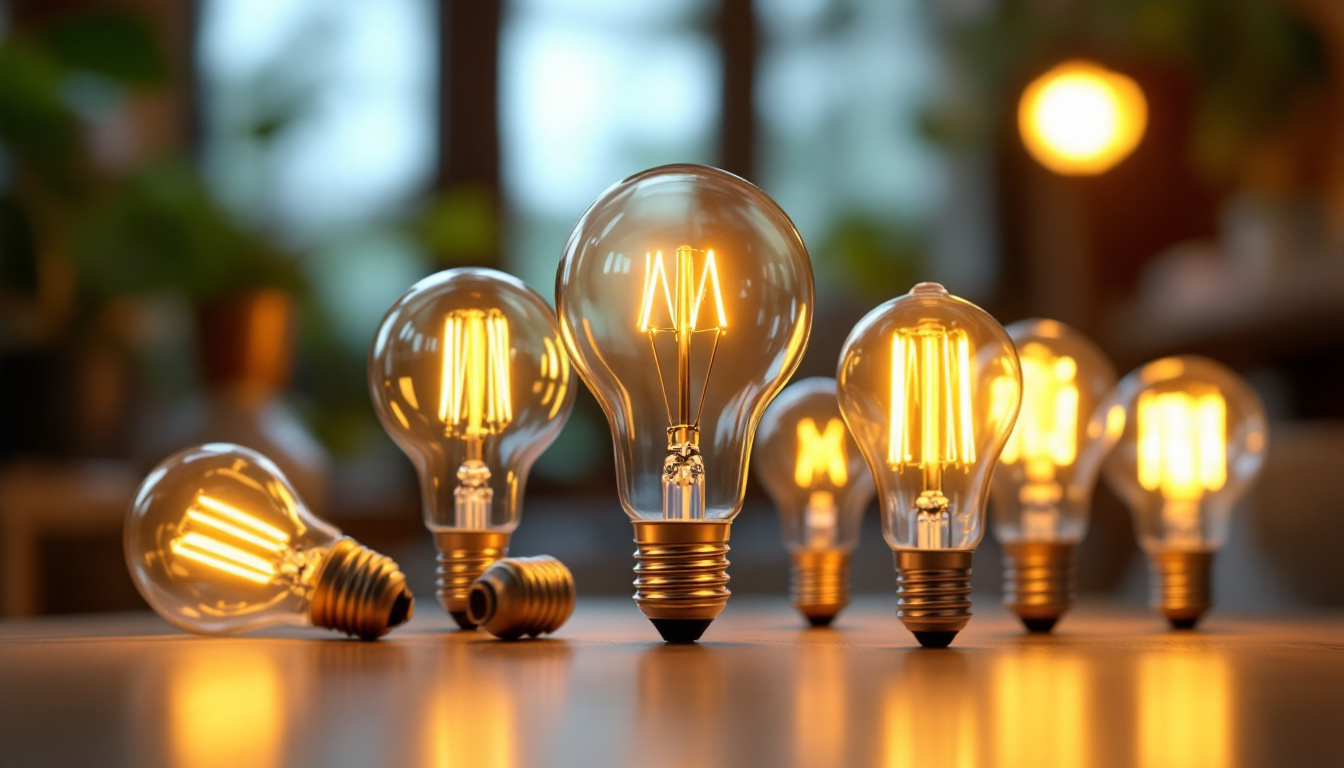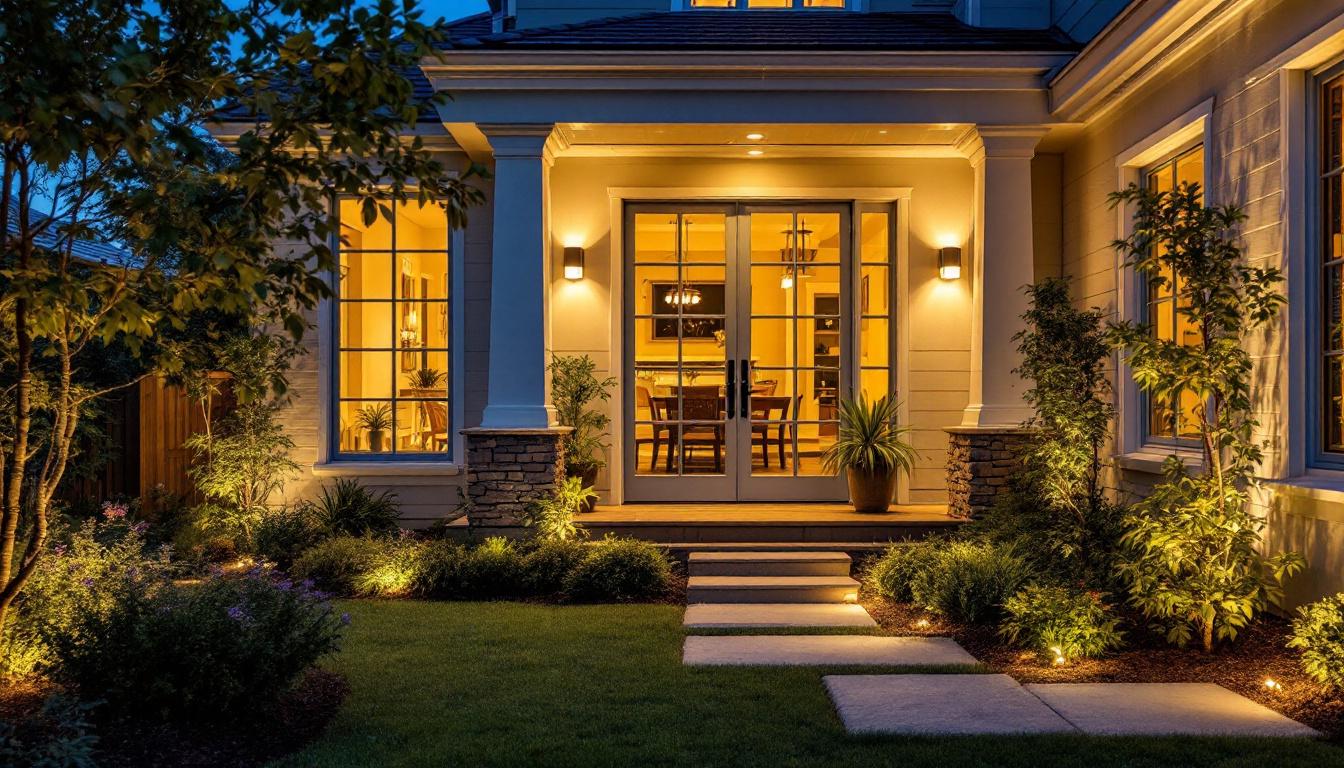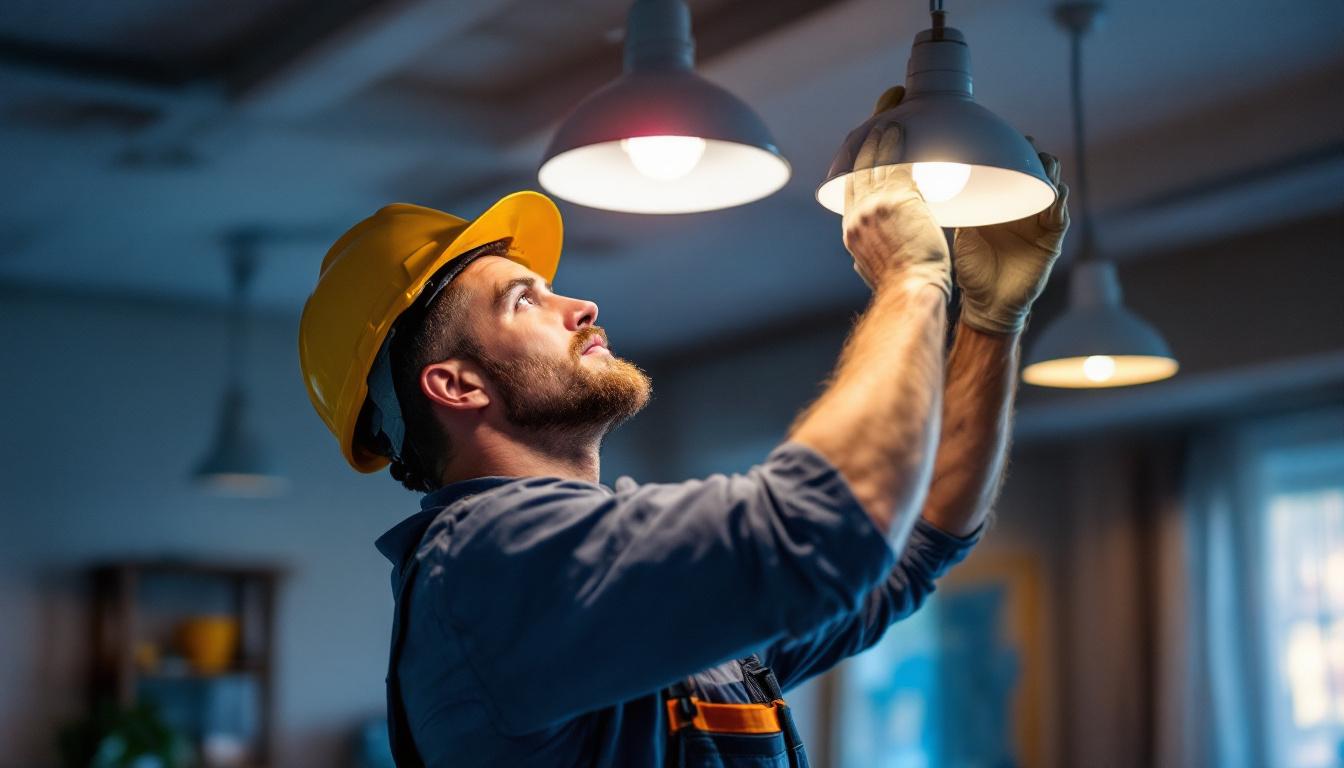
In the ever-evolving world of lighting technology, B type light bulbs have emerged as a significant player, gaining traction among contractors and consumers alike. These bulbs not only offer aesthetic appeal but also promise energy efficiency and versatility, making them a preferred choice in various settings. This article delves into the characteristics, benefits, and future potential of B type light bulbs in the lighting industry.
B type light bulbs, often referred to as “bulb shape B,” are characterized by their distinctive design, typically featuring a pear-like shape. This unique form is not just for aesthetics; it also serves functional purposes that enhance lighting quality in different environments.
The design of B type light bulbs is one of their most appealing features. Their elegant shape allows them to blend seamlessly into various decor styles, from contemporary to vintage. This versatility makes them a popular choice for chandeliers, sconces, and decorative fixtures, where the bulb itself can become a focal point.
Moreover, the variety of finishes available—such as clear, frosted, and colored—provides additional options for lighting contractors looking to create specific atmospheres. Whether aiming for a warm, inviting glow or a bright, vibrant ambiance, B type bulbs can cater to diverse lighting needs. The clear glass options, for instance, allow for maximum light output, making them ideal for spaces that require bright illumination, while frosted finishes can soften the light, creating a more intimate setting. Furthermore, colored B type bulbs can add a playful touch to events or seasonal decorations, enhancing the overall mood and experience.
Typically, B type bulbs come in various wattages and color temperatures, allowing for tailored lighting solutions. Most commonly, they are available in incandescent, LED, and CFL variants. The LED B type bulbs, in particular, have gained popularity due to their energy efficiency and long lifespan, making them a cost-effective choice for both contractors and end-users.
Additionally, the compatibility of B type bulbs with dimmer switches enhances their functionality. This feature allows for adjustable brightness, enabling users to create the desired mood in any setting. As a result, B type bulbs are increasingly favored in both residential and commercial applications. The ability to adjust lighting not only contributes to energy savings but also promotes a more dynamic use of space. For instance, in a restaurant, dimming the lights during dinner service can create a cozy atmosphere, while brighter settings during lunch hours can enhance visibility and encourage a lively environment. Furthermore, advancements in smart lighting technology have introduced B type bulbs that can be controlled via mobile apps, allowing users to customize their lighting experience even further, whether they are at home or away.
The growing popularity of B type light bulbs can be attributed to several key benefits that resonate with lighting contractors and their clients. Understanding these advantages is essential for making informed decisions in lighting design and installation.
One of the most significant advantages of B type light bulbs, particularly the LED variants, is their energy efficiency. Compared to traditional incandescent bulbs, LED B types consume significantly less energy while providing the same level of brightness. This reduction in energy consumption translates to lower electricity bills for consumers and a smaller carbon footprint, aligning with the industry’s shift towards sustainability.
Moreover, the longevity of LED B type bulbs—often lasting up to 25,000 hours—means less frequent replacements. This durability not only reduces waste but also minimizes maintenance costs for contractors, making them a practical choice for both residential and commercial projects. In addition, many B type bulbs are designed to withstand a range of temperatures and conditions, which enhances their reliability and performance in various settings. This resilience is particularly beneficial in environments where lighting is subject to frequent on-off cycles, as it helps to further extend the lifespan of the bulbs.
B type light bulbs are incredibly versatile, making them suitable for a wide range of applications. From homes to restaurants, hotels, and retail spaces, these bulbs can enhance the aesthetic appeal and functionality of any environment. Their ability to fit into various fixtures allows contractors to use them in diverse lighting designs, ensuring that clients receive customized solutions that meet their specific needs.
Additionally, B type bulbs can be used in both indoor and outdoor settings, provided they are rated for such use. This adaptability makes them a go-to option for contractors looking to create cohesive lighting schemes throughout a property. The range of color temperatures available for B type bulbs also allows for creative expression in design; warm white tones can create a cozy atmosphere in living spaces, while cooler tones can enhance focus and productivity in work environments. Furthermore, the availability of dimmable options means that lighting can be easily adjusted to suit different moods and activities, providing an added layer of functionality that is highly valued by end-users.
The lighting industry is witnessing a shift in consumer preferences, with an increasing demand for energy-efficient and aesthetically pleasing lighting solutions. B type light bulbs are at the forefront of this trend, catering to the evolving needs of consumers and contractors alike.
As awareness of environmental issues grows, consumers are seeking out energy-efficient lighting options. B type LED bulbs have positioned themselves as a preferred choice due to their low energy consumption and long lifespan. This shift is not only beneficial for the environment but also aligns with government regulations and incentives aimed at promoting energy efficiency.
Lighting contractors play a crucial role in this transition, as they are often the first point of contact for consumers seeking advice on lighting solutions. By recommending B type bulbs, contractors can help clients make informed choices that benefit both their wallets and the planet.
In addition to energy efficiency, consumers are increasingly focused on the aesthetic qualities of lighting. The unique shape and design of B type bulbs cater to this demand, allowing for creative lighting solutions that enhance interior design. As more homeowners and business owners prioritize aesthetics, the appeal of B type bulbs continues to grow.
Contractors who stay ahead of these trends by incorporating B type bulbs into their designs can differentiate themselves in a competitive market, attracting clients who value both form and function.
While B type light bulbs offer numerous benefits, there are challenges and considerations that lighting contractors must keep in mind when recommending these products to clients.
One of the primary challenges associated with B type LED bulbs is their higher initial cost compared to traditional incandescent options. While the long-term savings on energy bills and replacement costs can be significant, some consumers may be hesitant to invest upfront.
Lighting contractors must be prepared to educate clients about the long-term benefits of B type bulbs, emphasizing their energy efficiency and durability. Providing cost comparisons and highlighting potential savings can help alleviate concerns and encourage clients to make the switch.
Another consideration is the compatibility of B type bulbs with existing fixtures. While most fixtures can accommodate B type bulbs, it is essential for contractors to ensure that the chosen bulbs will work seamlessly with the clients’ current lighting systems. This includes checking for compatibility with dimmer switches and ensuring that the wattage is appropriate for the fixture.
Taking the time to assess these factors can prevent potential issues during installation and ensure that clients are satisfied with their lighting choices.
The future of B type light bulbs appears promising, with ongoing advancements in technology and design. As the lighting industry continues to evolve, B type bulbs are likely to play an increasingly important role in shaping lighting solutions.
With rapid advancements in LED technology, B type bulbs are expected to become even more energy-efficient and versatile. Innovations such as smart lighting integration and improved color rendering capabilities will enhance the functionality and appeal of these bulbs.
As smart home technology becomes more prevalent, the incorporation of B type bulbs into automated lighting systems will likely become a standard practice. This integration can provide users with greater control over their lighting environments, allowing for customized settings that cater to individual preferences.
The growing popularity of B type light bulbs presents numerous market opportunities for lighting contractors. As consumers continue to seek out energy-efficient and aesthetically pleasing lighting solutions, contractors who specialize in B type bulbs can carve out a niche in the industry.
Furthermore, as sustainability becomes a central focus for many businesses, contractors who promote B type bulbs as part of their offerings can align themselves with environmentally conscious practices, attracting clients who prioritize sustainability in their purchasing decisions.
B type light bulbs are carving out a significant space in the lighting industry, driven by their unique design, energy efficiency, and versatility. As consumer preferences shift towards sustainable and aesthetically pleasing lighting solutions, the importance of B type bulbs continues to grow.
Lighting contractors who embrace this trend and educate their clients about the benefits of B type bulbs will not only enhance their offerings but also contribute to a more sustainable future. With ongoing technological advancements and expanding market opportunities, B type light bulbs are poised to remain a vital component of the lighting landscape for years to come.
Ready to elevate your lighting solutions with the efficiency and elegance of B type light bulbs? At LumenWholesale, we provide lighting contractors with an exceptional range of spec-grade lighting products, including the versatile B type bulbs, at unbeatable wholesale prices. Say goodbye to local distributor markups and hello to premium lighting with free shipping on bulk orders. Don’t compromise on quality or cost. Click now to explore our selection and discover the best value in Wholesale Lighting at the Best Value for your next project.

Discover the art of outdoor illumination with expert tips from lighting contractors.

Discover expert insights and practical tips for lighting contractors in “Hi Hats Light.” This article delves into the nuances of selecting and installing hi-hat lighting, ensuring your projects shine with precision and style.

Discover the essential signs of malfunctioning fluorescent bulbs and ballasts with our comprehensive guide.

Illuminate your projects with our comprehensive guide on solar flag pole lights.